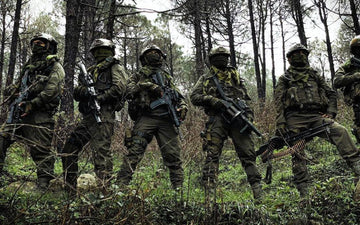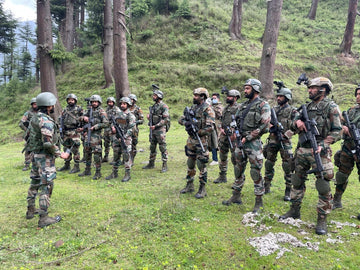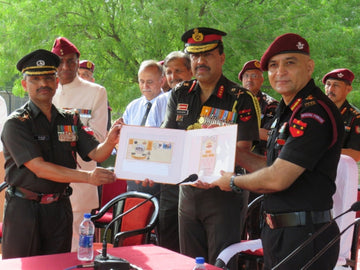For girls aspiring to join the Indian Armed Forces in 2025, an array of pathways is now accessible, reflecting the evolving landscape of gender equality and representation within military ranks. The Indian military has made significant strides since the induction of its first women officers in 1992, creating numerous opportunities for young, ambitious women to pursue a career in Defence. This article will delve into the 12 best ways for girls to join the Indian Armed Forces in 2025, highlighting the historical context, recruitment pathways, eligibility criteria, training processes, and future trends, along with the challenges and solutions that exist in this domain.
Historical Context and Progress
The landscape of women in the Indian Armed Forces has transformed dramatically over the past three decades. Initially, women were restricted mainly to medical and nursing positions, but recent legislative and operational changes have opened new avenues. Notable advancements include:
-
1992: Induction of the first women officers in the Indian Army, initially only in the Short Service Commission (SSC) roles.
-
2015: The Government of India allowed women to serve in various combat roles, gradually dismantling longstanding barriers.
-
2021: The admission of women to the National Defence Academy (NDA) marked a landmark achievement in integrating women into the combat training pipeline. Other notable developments include the establishment of direct recruitment for Women Military Police.
These significant decisions have catalyzed a cultural shift within the military, promoting gender equality and creating platforms for women to harness their full potential within the armed forces.
Recruitment Pathways
1. National Defence Academy (NDA) Entry
The NDA is a prestigious training institution for future leaders of the Indian Armed Forces. The inclusion of women in the NDA, beginning in 2021, represents a major breakthrough for gender inclusivity. Female aspirants seeking admission must clear the UPSC NDA examination, which assesses their aptitude and intelligence across various subjects. This entry point not only provides military training but also fosters leadership and teamwork skills vital for officers.
2. UPSC CDS OTA Entry
The Combined Defence Services (CDS) examination is a prima facie gateway for women to enter the Officers Training Academy (OTA). Successful candidates undergo a rigorous training course, equipping them for Short Service Commissions in various branches of the Army. The OTA specifically focuses on developing leadership abilities, tactical knowledge, and physical conditioning.
3. Military Nursing Service (MNS) Entry
For girls pursuing careers in healthcare within the military, the Military Nursing Service offers a structured pathway. Candidates must complete the B.Sc. Nursing course, after which they are commissioned as nursing officers. This emphasizes a dual-focus on patient care and military discipline, allowing women to contribute significantly to health services in the Indian Armed Forces.
4. Short Service Commission (SSC)
The Short Service Commission is available across various arms of the military, offering women opportunities in diverse fields. For instance, the Remount and Veterinary Corps (RVC) welcomes women with degrees in Veterinary Science. For the 2025 recruitment drive, out of 20 total vacancies in the RVC, three are specifically allocated for female candidates. This marks an essential step in diversifying roles available to women within the Armed Forces.
5. Women Military Police (WMP)
The establishment of the Women Military Police signifies an important milestone in women’s integration into the Army. This recruitment initiative allows women to take on essential duties in military policing, ensuring safety and security within the army premises. Recruitment occurs online, embracing a modern approach to enlistment.
6. Territorial Army
The Territorial Army (TA) provides a unique opportunity for women to serve part-time, balancing military duties with civilian careers. Female aspirants can engage in TA, which enables them to contribute to national security while maintaining their professional pursuits in other fields.
7. Air Force and Navy Entries
Women also have the chance to join the Indian Air Force and Navy through various examinations. The Air Force Common Admission Test (AFCAT) allows women to apply for multiple roles within the Air Force, while the Indian Navy Entrance Test (INET) facilitates entry into naval positions. Both services offer comprehensive training and career advancement for women, expanding their role in the Defence forces.
Eligibility Criteria and Application Process
The eligibility criteria for these various pathways reflect the government's commitment to inclusion and equity:
-
Age and Education:
- NDA: 16.5 to 19.5 years; must have completed 12th standard.
- CDS OTA: 21 to 25 years; require a graduation degree for non-medical entries.
- MNS: 18 to 25 years; must have a B.Sc. Nursing qualification.
-
Citizenship: Candidates must be Indian citizens, though certain exceptions exist for eligible Nepali nationals and individuals from a few specified countries.
-
Application Mode: Applications are predominantly submitted online through official government portals like Join Indian Army, UPSC, or respective services’ websites, simplifying the recruitment process.
Training and Roles
Once selected, women undergo rigorous training depending on their chosen pathway:
-
NDA and OTA: Encompassing a mix of academics, physical training, and military tactics, these institutions prepare officers for leadership positions and enhance their readiness for various roles within the armed forces.
-
MNS and SSC: Nursing professionals undergo specialized training designed for military healthcare settings, while SSC candidates engage in tactical military training relevant to their specific corps.
Women now possess eligibility for roles in combat, logistics, administration, and medical services—previously considered male domains. This accessibility symbolizes a cultural and operational shift in the perception of women’s capacities within the military framework.
Vacancies and Salaries
The recruitment drive for 2025 reflects the growing acceptance of women in the armed forces. Notably, the RVC has earmarked three positions out of a total of 20 private vacancies for women.
-
Salaries: Upon commissioning, female officers can expect competitive remuneration, with monthly earnings reaching as high as Rs 1.2 lakh, reflecting the value placed on their service and expertise.
Case Studies or Real-World Applications
Several female officers have set inspiring precedents within the Indian armed forces:
-
Captain Tania Shergill: An exemplary figure, she became the first woman to lead an all-male contingent during the Army Day Parade in 2020, showcasing women's growing visibility and influence in the armed forces.
-
Major Rani Rampal: The captain of the Indian Women's Hockey Team, Rampal's journey from sports to joining the armed forces resonates with many young aspirants. Her story emphasizes that courage and leadership can thrive in various fields, including Defence.
These narratives bolster the aspirations of women across India, showing them that not only can they aspire to join the armed forces, but they can also excel and inspire future generations.
Statistical Data and Research Insights
The representation of women in the Indian Armed Forces stands at about 4% of the total personnel, which, while a significant improvement, indicates ample scope for growth. As of 2023, approximately 1,500 women have been commissioned into various roles. This statistic underscores the ambitious aim of reaching a better gender balance, with projections indicating that women's participation could double by 2030 if current trends continue.
Challenges and Solutions
Despite the progress, challenges remain, including:
-
Cultural Barriers: Persistent stereotypes may deter women from applying or progressing within the armed forces.
-
Solution: Promoting success stories and awareness campaigns highlighting women’s achievements can inspire more aspirants.
-
Physical and Psychological Preparedness: The rigorous demands of military training can be daunting for some women.
-
Solution: Implementing preparatory programs focusing on physical fitness and mental resilience can better equip female candidates for the challenges ahead.
-
Systemic Issues: Bias within recruitment processes can inadvertently favor male candidates.
-
Solution: Establishing stronger policies and equitable benchmarks can ensure fair treatment and evaluation of all candidates.
Future Trends and Predictions
As society progresses, the role of women in the Indian Armed Forces is expected to evolve dramatically. Key trends anticipated in the coming years may include:
-
Increased Numbers: Continued policy initiatives aimed at increasing female representation will likely yield more female officers across various roles.
-
Diverse Roles: Expansion into combat and leadership roles may continue, encouraging women to take on higher managerial positions within Defence.
-
Enhanced Support Systems: Organizations may develop better mentoring networks and support systems designed specifically for women, fostering the growth of female leaders within the military.
Conclusion
The Indian Armed Forces have embarked on a transformative journey of inclusivity, bringing unprecedented opportunities for women to serve their nation. With multiple pathways like NDA, CDS, MNS, and others available in 2025, aspiring female candidates are encouraged to pursue their dreams.
As the military landscape continues to evolve, the shift towards gender parity reflects not only a commitment to equal opportunities but also enhances the operational effectiveness of the armed forces. Young women today stand at the forefront of this exciting era, empowered to break barriers and redefine the contours of military service. The call to serve the nation is open and resounding—it's a call to be heard.
For continuous support and resources, aspiring candidates can explore platforms like SSBCrack and SSBCrackExams for comprehensive study materials, guidance, and exam preparation to assist in their journey toward joining the Indian Armed Forces.






Defence me jana hai ya air force
My daughter is interested in joining the armed forces. She is now just 12 years old. Upon making enquires I got the feedback that NDA enlistment now favours candidates with armed forces family background. Are there institutes that prepare candidates for various defence entrance exams?